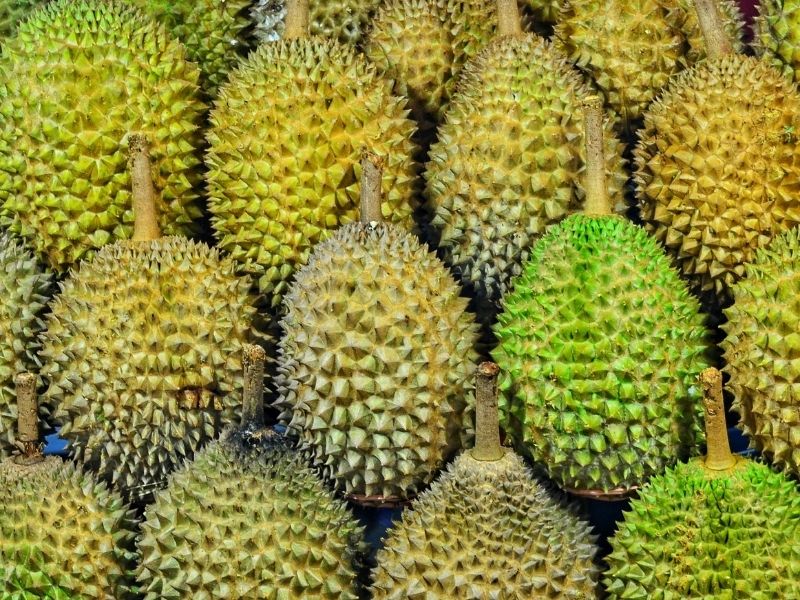As Malaysians, we’re no strangers to durians. When the “King Of Fruits” season rolls around, all types of durians in Malaysia go on display waiting to be savoured. Truthfully, our love affair with the thorny fruit is unquenchable, and many are willing to drain their wallets and go to great lengths for their favourites.
When Is Durian Season In Malaysia?
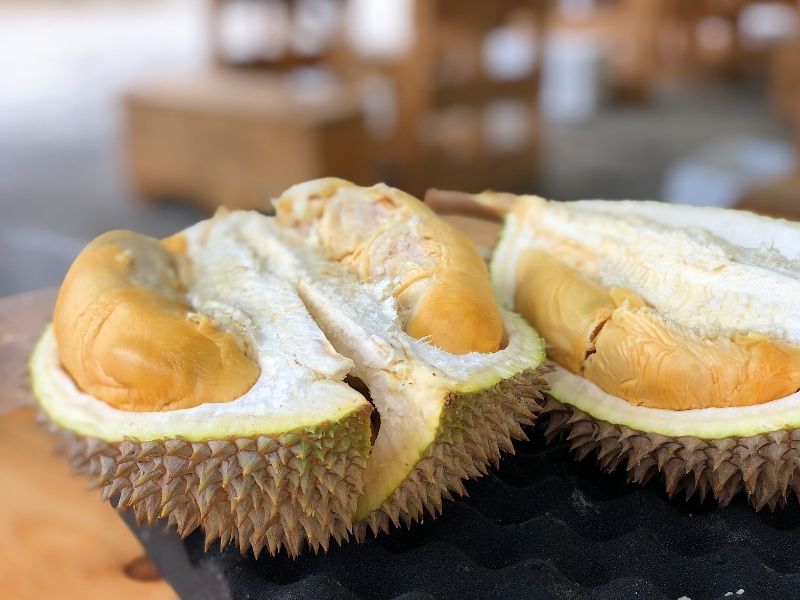
Generally, the durian season starts in early April and continues until August-September. However, each fruit’s seasonal run may differ from one another. For example, the famous Musang King is reportedly most ripe in late June.
But for durian novices, it’s easy to get lost in the sea of names and jargon, making the durian selection process a mind-boggling one. We detail all well-known types of durians in Malaysia below, explaining their flavours and textures. By the end of it, we hope it’ll help with your next durian haul!
Explaining The Different Types Of Durians In Malaysia
There are no less than 17 types!
1. Musang King aka Mao Shan Wang
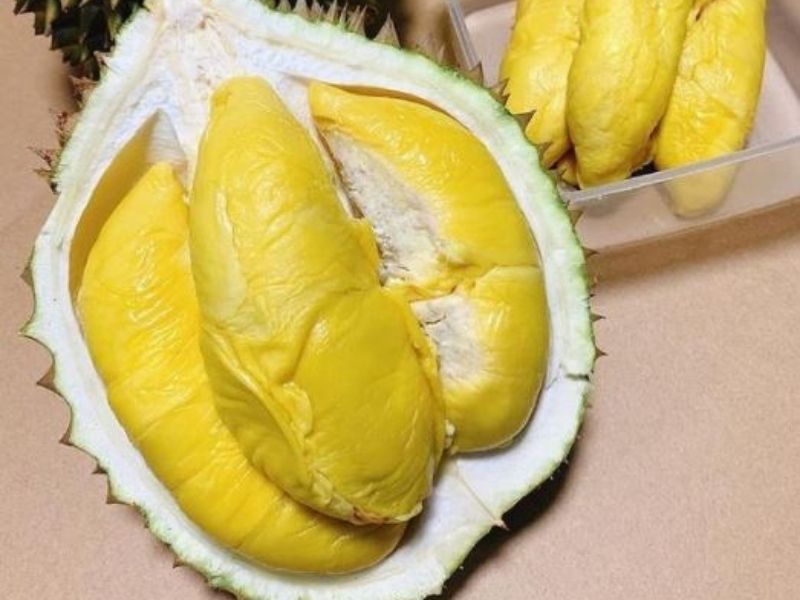
Without a doubt, the reigning champ of the durian empire is the Musang King or Mao Shan Wang, making it the most well-known type of durian in Malaysia and beyond. The fruit’s claim to fame is its creamy flesh that melts into flavours of rich bitterness and sweetness in the mouth. Smells as good as it tastes, the Musang King is equally delicious in ice cream or pastries.
Flavour: Creamy and bitter-sweet
Texture: Butter-like thick flesh
Colour: Bright yellow
2. D24
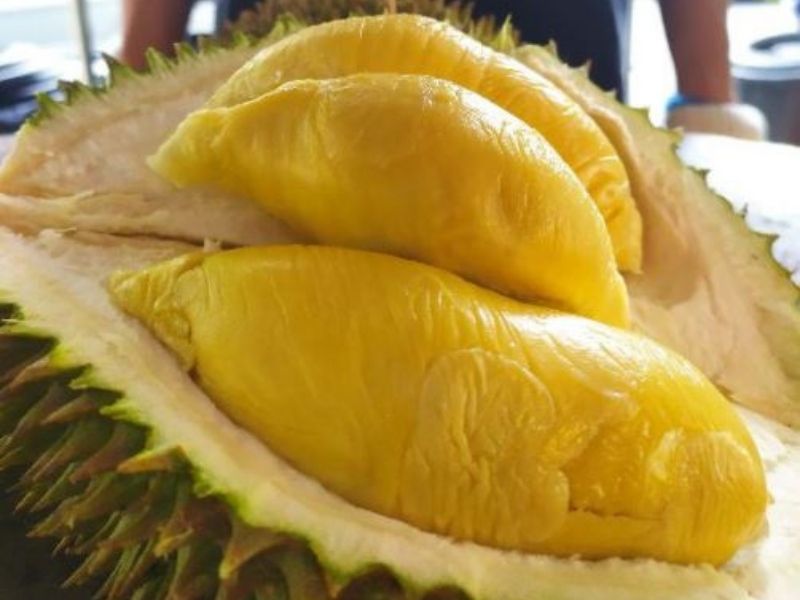
Before Musang King, there was D24. While its glory days are somewhat behind it, it still commands a strong following of fans who remain loyal to its distinct bitterness. There are also hints of alcohol, which gives the fruit a full-bodied mouthfeel. If you’re bringing a friend to try durian for the first time, go for this because it isn’t too overpowering.
Flavour: Mostly bitter with hints of sweetness and alcohol
Texture: Robust, firm, and thick. Can be a little dry at times
Colour: Pale yellow
3. Tekka
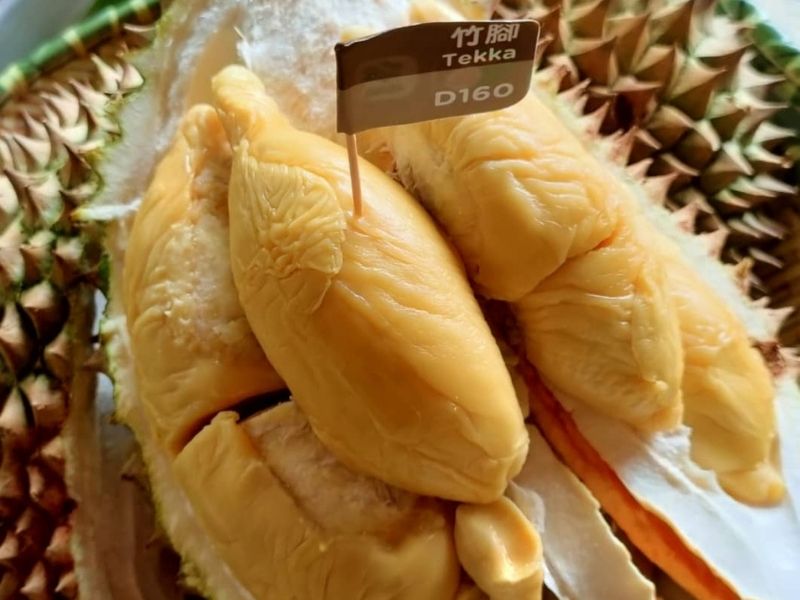
Every kingdom needs a queen. Tekka, also known as the Musang Queen, comes on the tail of the Musang King’s reputation. However, Tekka stands on its own for its consistent texture and bitterness although it doesn’t look like much. In terms of scarcity among the types of durians in Malaysia, the Tekka is hard to come by. So if you ever see one, don’t think twice to try it.
Flavour: Bitter with an overlaying tartness
Texture: Moist and wrinkly, breaking easily
Colour: Pale, almost-white yellow
4. Black Thorn
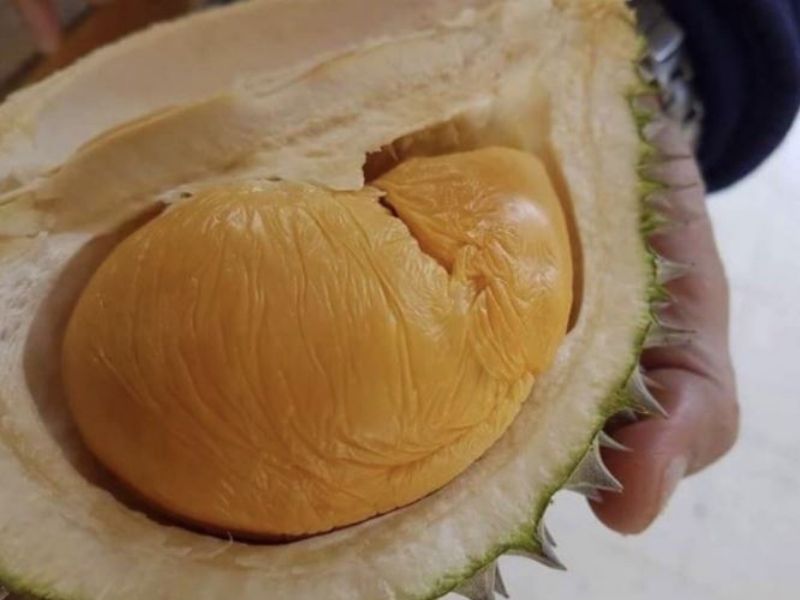
Comparing appearances among the types of durians in Malaysia, you can’t miss a Black Thorn if you see one. Its flesh has a palpable orange hue reminiscing of a setting sun. Picking it up, you’ll feel the softness of the fiberless, buttery flesh that holds flavours where bitterness and custard-like sweetness intertwine. All of these don’t come cheap, though. The Black Thorn can be heavy on the wallet.
Flavour: Like the Musang King, expect bitter-sweet flavours but with more balance between the two
Texture: Light, marshmallow-smooth
Colour: Light orange
5. Red Prawn
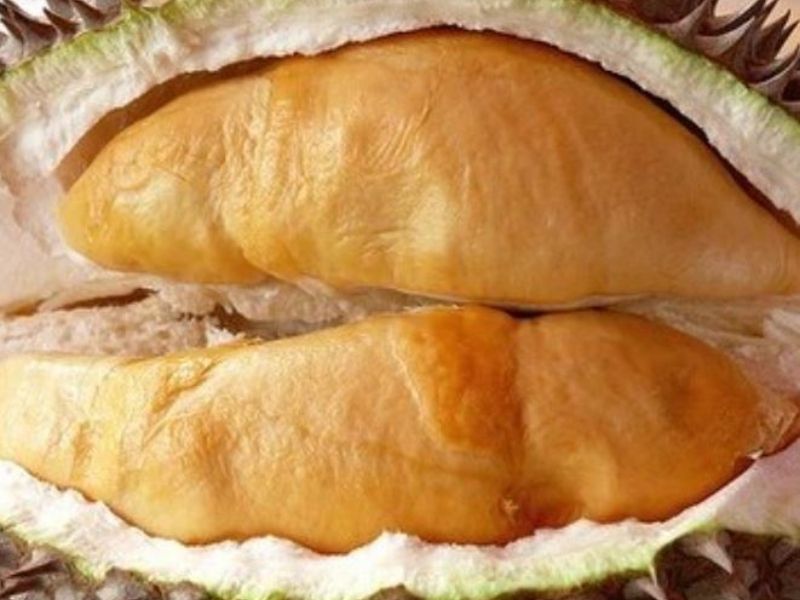
If you have a sweet tooth, then the Red Prawn will suit your taste buds just right. Actively grown in Johor and Pahang, the Red Prawn is closer to being a “dessert” than other types of durians in Malaysia. Creamy and rich, there’s an obvious absence of bitterness in the reddish flesh, but that’s replaced with memorable sweetness.
Flavour: Sweet
Texture: Creamy but can be slightly watery
Colour: Red-orange
6. Golden Phoenix
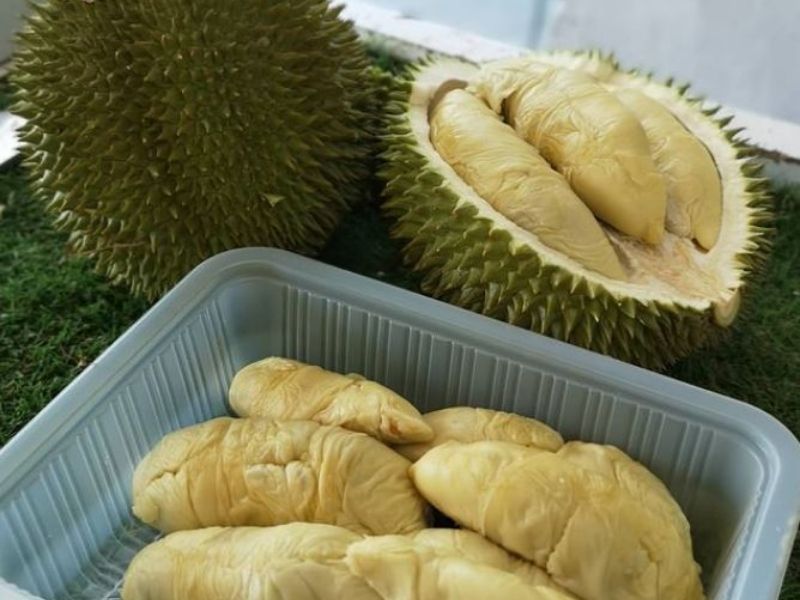
You’ll smell a Golden Phoenix durian from a mile away because of its pungent aroma. Taste-wise, it’s not as creamy as the D24 or Musang King due to the higher water content in the flesh. As such, it’s an acquired taste. But its affordability and availability make the Golden Phoenix a popular choice among casual durian eaters.
Flavour: Bitter, occasionally sweet
Texture: Less creamy with a watery texture
Colour: Pale yellow-white
7. XO
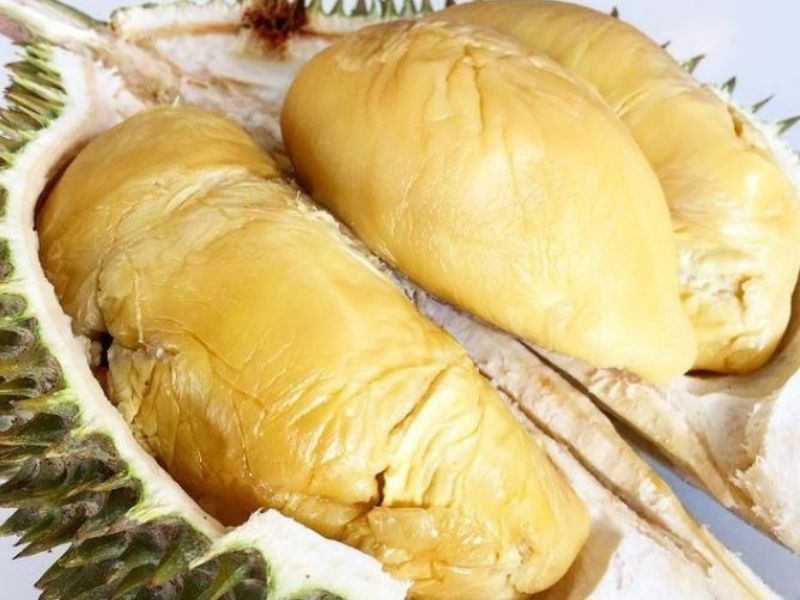
Strong and full-bodied like the cognac that it’s named after, the XO gets its signature bitterness from prolonged fermentation. This process also gives it a washed-out look, which might look unappealing at first glance. But when you take in the fruit, you’ll be hit with flavours that are certainly larger than life. The XO is one of the most well-received types of durians in Malaysia.
Flavour: Bitter with an alcohol aftertaste
Texture: Soft and slightly watery
Colour: Pale yellow-white
8. D101
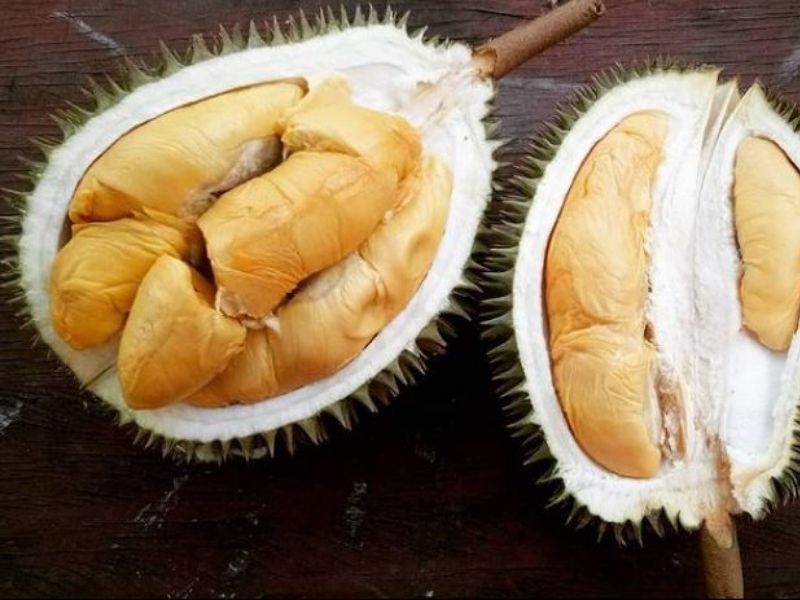
Critically acclaimed in Johor, the D101 combines bitterness, sweetness, and fibrous flesh into a delectable treat. It’s the perfect durian to satisfy your cravings without feeling guilty, which also makes it accessible for young children and the elderly! As the flesh is firmer than other types of Malaysian durians, it falls off the seed easily so don’t worry about making a mess.
Flavour: Bitter-sweet
Texture: Fibrous and firm
Colour: Yellow with subtle orange tones
9. D13
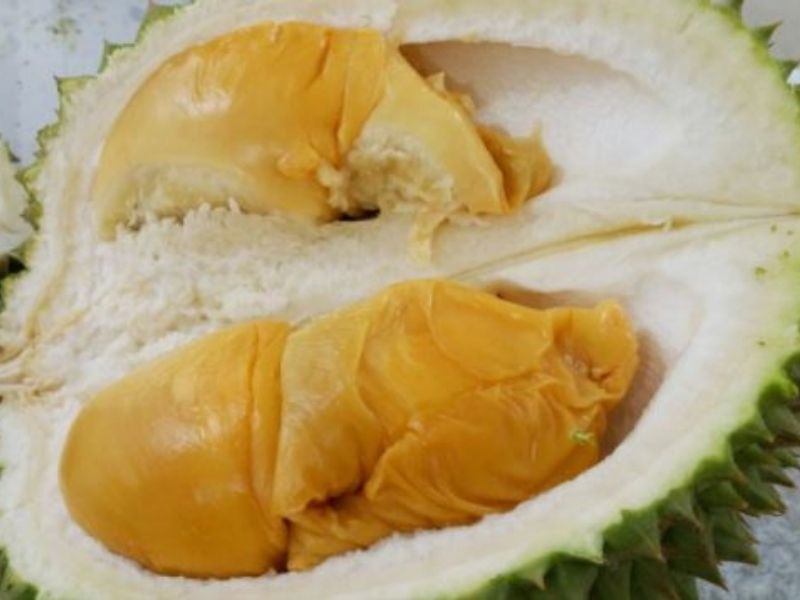
Easily mistaken as Red Prawns, the D13 has deep orange flesh that’s mostly sweet with flavours of bitterness sprinkled throughout. That said, durian aficionados may find the D13’s overall appeal too mild and unsatisfying. By comparison, the D13’s seeds are also larger than other styles of durian in Malaysia.
Flavour: Sweet with subtle bitterness
Texture: Sticky and not fibrous
Colour: Red-orange
10. Black Pearl
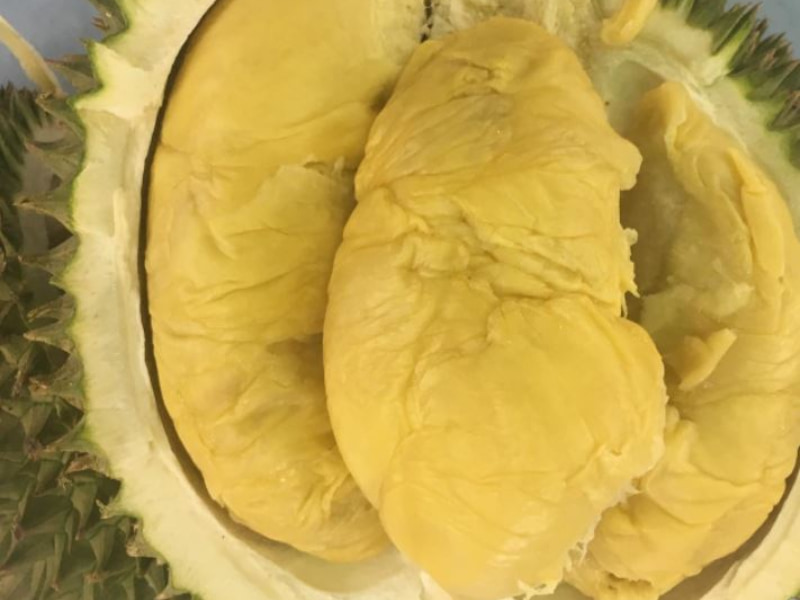
Identified by pale bijou seeds, the Black Pearl is one of the rarest durians on the market, so expect prices to be steeper than usual. But the price tag justifies the exquisite taste, according to fans of the fruit. Heavy in bitterness with a clear tinge of sweetness undercutting the aftertaste.
Flavour: Bitter with a subtle sweetness
Texture: Soft
Colour: Pale yellow-white
11. Tupai King
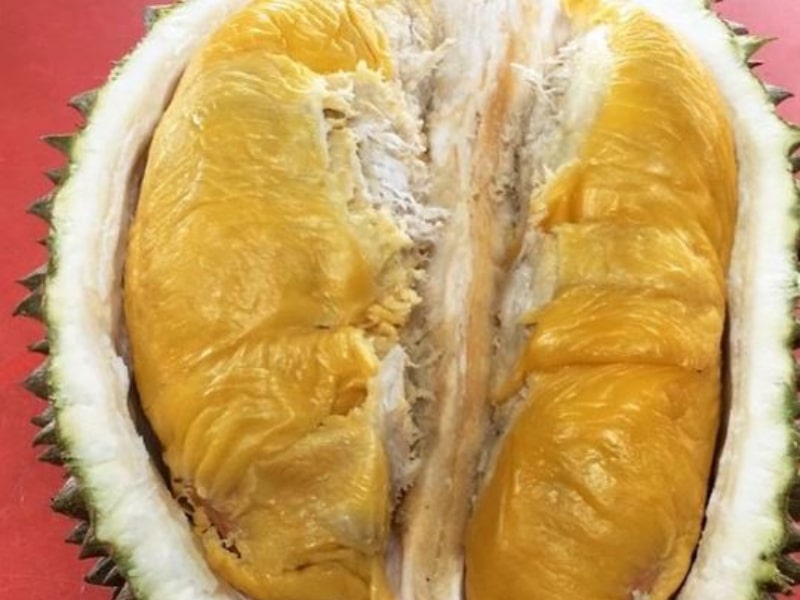
There’s a new king challenging the crown that Musang King presides: Tupai King. Also recognised as D214, the Tupai King hails from Penang and has commanded a cult following since its discovery about two decades ago. The flavour is said to be boozy and rich without even an ounce of bitterness.
Flavour: Rich and sweet
Texture: Slightly fibrous
Colour: Bright yellow
12. D17
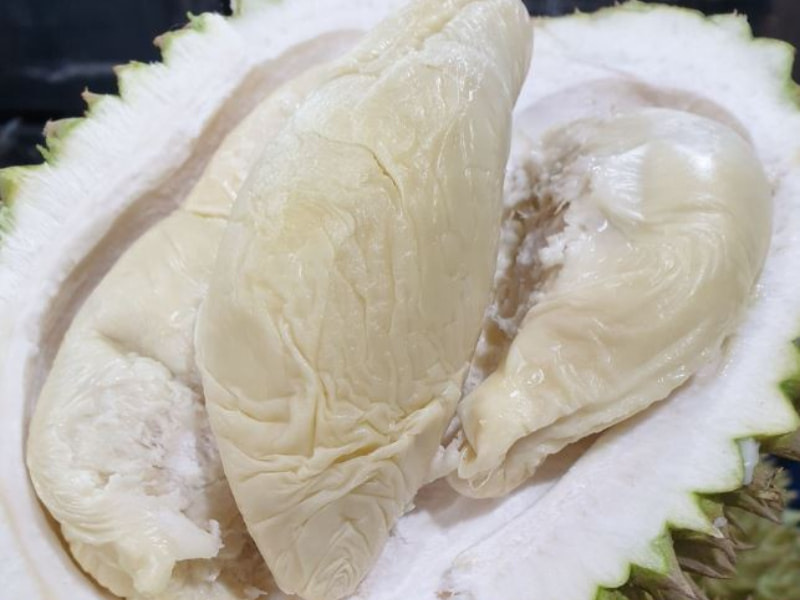
Relatively smaller in stature compared to its siblings, the D17’s shell is distinguished by pyramid-like thorns. The insides match the exterior as D17 fruits are generally smaller too, but certainly not lacking in flavour. Tasting notes of coffee and bitterness come to mind while the texture leans towards a wet, almost yoghurt-like body.
Flavour: Bitter-sweet
Texture: Wet with minimal fibre
Colour: Pale white
13. Green Skin
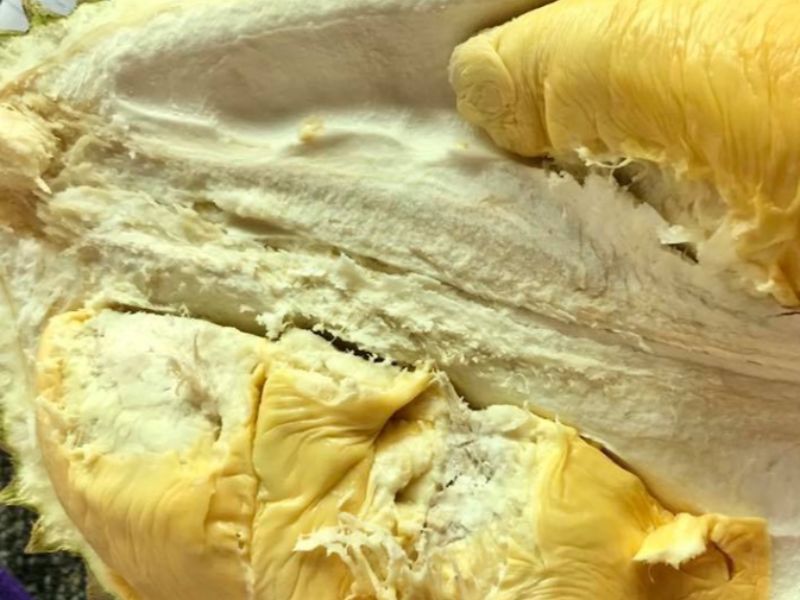
Also known as Green Shell, the Green Skin durian, found in parts of Johor like Muar and Segamat, is a rare and highly valued breed known for its notable sweetness and rich, creamy texture. The dry and creamy texture, plus the unique flavour profile with a hint of alcoholic taste makes it a must-try for every durian lover.
Flavour: Mild and less pungent, often sweeter and less bitter
Texture: Creamy and slightly fibrous
Colour: Pale yellow
14. Durian Kampung
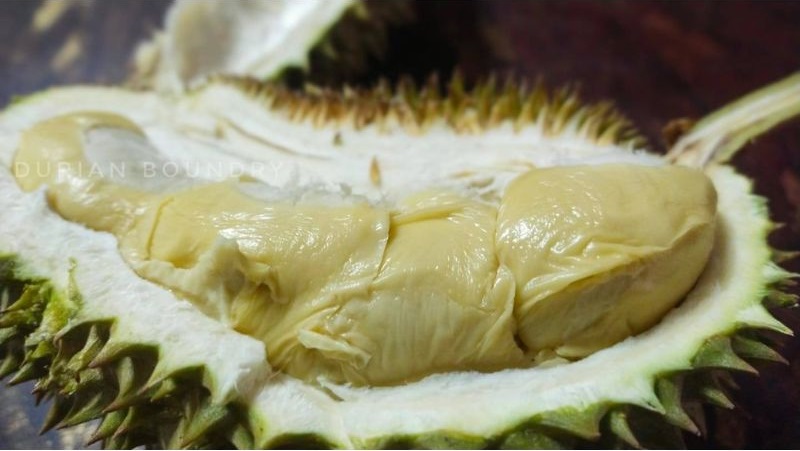
Durian Kampung, often referred to as village durian, encompasses a variety of traditional, wild-grown durians found in rural areas across Malaysia. Unlike cultivated types, these durians are not selectively bred, resulting in diverse flavours and textures. Typically, Durian Kampung has a mix of sweet and bitter notes, with creamy yet sometimes fibrous flesh. Sizes and shapes vary significantly, reflecting their natural, unselected origins. This durian is less consistent in quality but offers a unique, authentic taste experience.
Flavour: Can range from sweet to bitter, often less consistent
Texture: Creamy and slightly fibrous
Colour: Can range from pale yellow to deep yellow, and sometimes creamy white
15. Durian Jantung
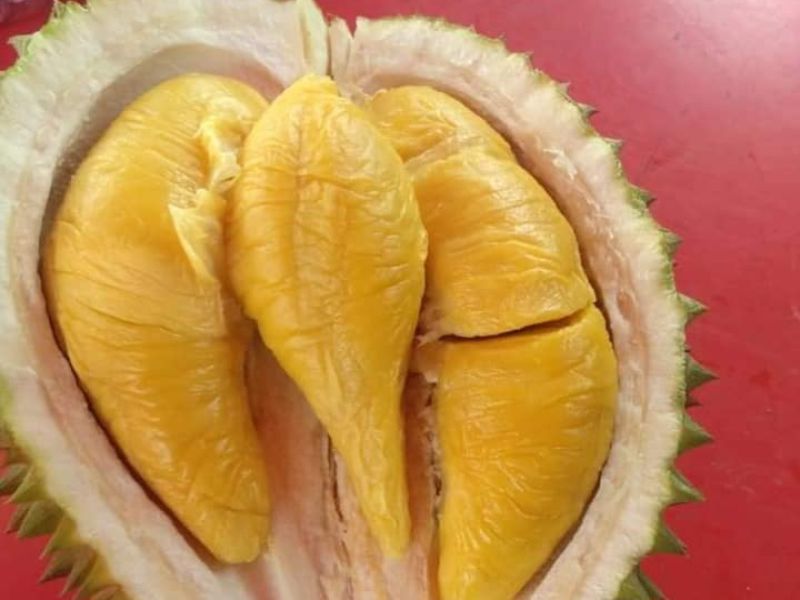
Durian Jantung, named for its heart-like shape, is a distinctive variety of durian known for its large size and creamy, pale yellow flesh. This durian is prized for its sweet and mildly bitter flavour, offering a rich, satisfying taste. The flesh is notably smooth and less fibrous, making it a favourite among durian enthusiasts.
Flavour: Sweet and mildly bitter
Texture: Smooth and creamy with minimal fibrousness
Colour: Pale yellow
16. Durian “Mardi Super” MS88
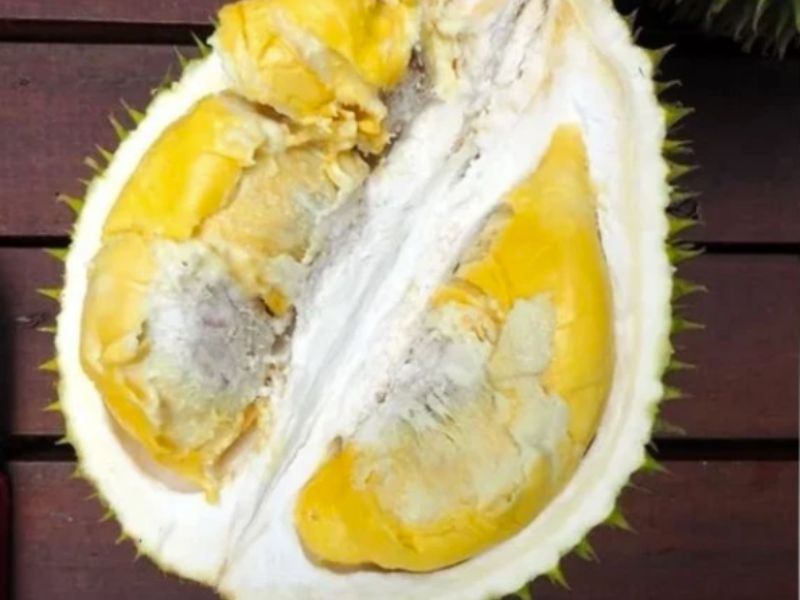
The MS88, also known as MDUR 88 (D190), is a premium durian variety developed by Malaysia’s MARDI through over 30 years of research. A hybrid between D24 and D10, it features thick, creamy flesh with a rich golden-yellow hue. The texture is smooth, custard-like, and slightly sticky, offering a balanced flavour that’s sweet with a subtle bitter note. One of MS88’s unique traits is its ability to stay intact longer after falling, making it ideal for storage and export. It’s now increasingly cultivated in Johor, Pahang, and Perak due to strong local and international demand.
Flavour: Sweet and creamy with a mild, balanced bitterness
Texture: Smooth, thick, custard-like, and slightly sticky
Colour: Rich golden-yellow flesh
17. Durian J Sparrow (D216)
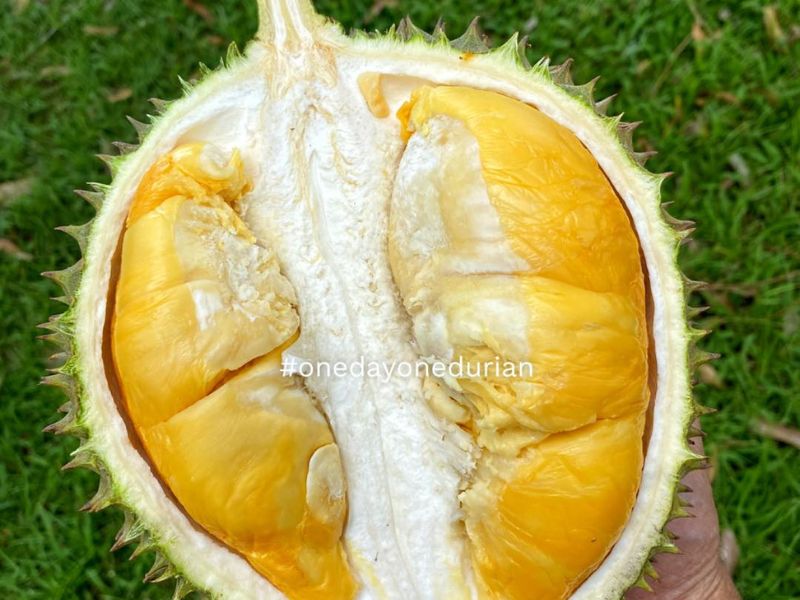
Durian J Sparrow (D216) is a relatively new and rare durian variety originating from Kedah, Malaysia. It stands out with its round shape, short stem, and distinctive purplish thorns, a unique feature not commonly found in other cultivars. The flesh is deep yellow, with a rich, creamy, and smooth texture. Its flavour profile is intensely sweet with a hint of mild bitterness, offering a well-balanced, satisfying taste. With a high sugar content, J Sparrow has quickly become a favourite among durian connoisseurs seeking a premium, indulgent experience.
Flavour: Intensely sweet with a mild, lingering bitterness for a balanced, satisfying taste
Texture: Rich, creamy, smooth, and velvety
Colour: Deep, vibrant yellow
Useful Tips On How To Choose The Best Durian
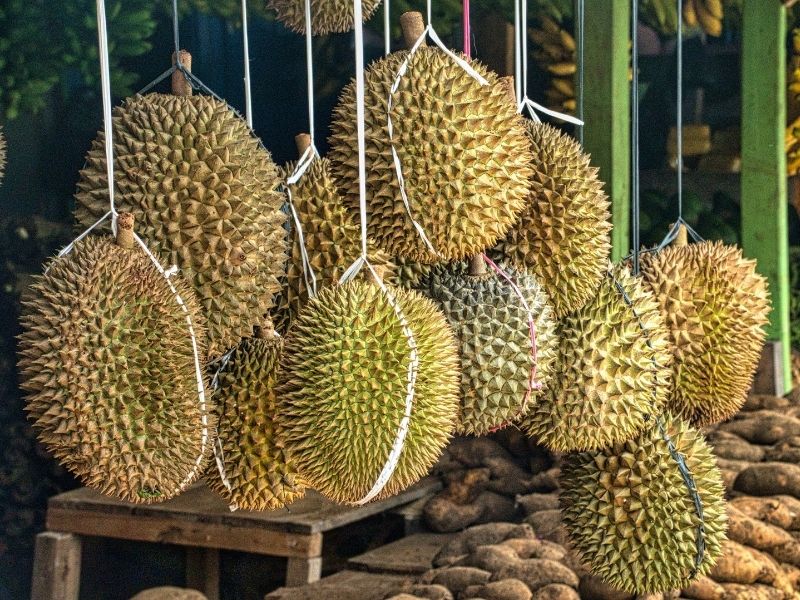
Normally, you should leave it to the vendors to choose your durians. That said, there are unscrupulous sellers who may want to shortchange you for a quick buck. So, it’s advisable that you keep going back to your preferred durian seller if you find them to be trustworthy.
However, there may be times when you have to do the choosing yourself. Here are a few things to take note of:
- A good durian must smell good.
- Watch for any abnormalities in the shape. If a durian has concave sides, it’s likely an empty chamber.
- Inspect the stalk. A ripe durian’s stalk is green with fraying brown ends.
- Check the flesh. Make sure the colour isn’t far from its original shade.
- If all else fails, taste it! Nothing can fail a taste test. Durians are an acquired taste, you’ll never know if you like a particular kind until you try it.
We’re Lucky To Have So Many Types Of Durians In Malaysia
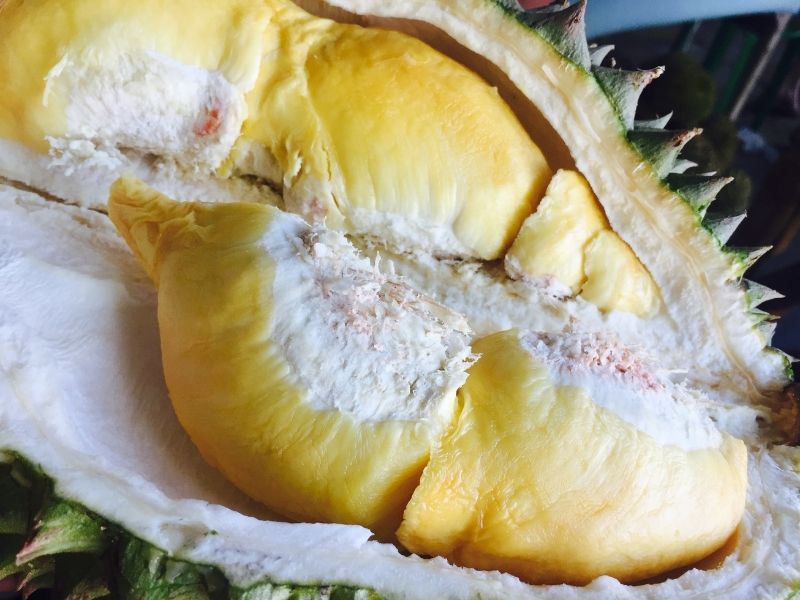
Love it or loathe it, durians are ingrained into Malaysian culture. Commonly, friends and families bond over durian after dinner. Some even have it for dinner! Hopefully, after getting acquainted with the types of durians in Malaysia, you can make an informed decision for the next durian makan session.
Not keen on heading out for durian? Have your favourite fruits delivered to your doorstep via these last-mile durian delivery services.
Cover image courtesy of Jonny Clow via Unsplash.

